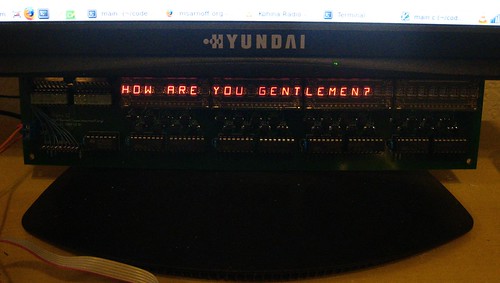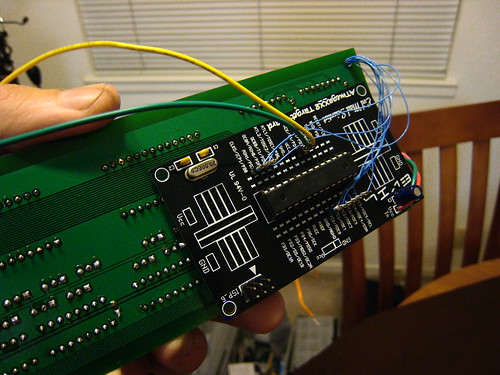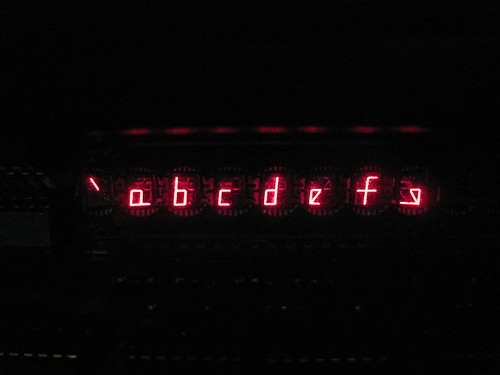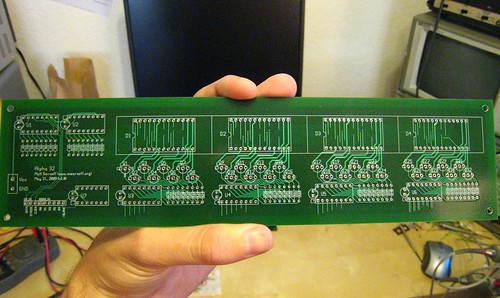32-Character Serial LED Display
May 2009

Sometimes I'll stumble upon something AWESOME on eBay. In this case, it was four ancient HDSP-6508 alphanumeric ("starburst") displays. I originally wanted to get sixteen of them and make a giant LED terminal, but my selling lead fell through. Instead, I built a one-line display and added a two-wire serial interface to use for microcontroller projects.
The circuit would have been way too complicated to wire-wrap or build on perfboard, so I took my first crack at PCB design. The circuit was created completely with open-source tools; gschem for schematic design and pcb for board layout. The board was fabricated by PCBFabExpress, conveniently located in Sunnyvale. (They allow will-call pickup, but unfortunately you still have to pay the shipping fee.)
This was my first board, and was created with free software, so naturally I was a bit skeptical as to how it would come out. Much to my delight, the Gerber files produced by pcb worked perfectly, and the board worked fine.
The display board is designed for multiplexed operation. It uses two shift registers to store the 16-bit segment pattern, and a bank of 74HC238 decoders to activate one of the 32 characters.
I didn't have the foresight to add multiplexing and ASCII-to-segment decoding on the board, so I stuck an ATmega48 on an Evil Mad Scientist Target Board (provided by the Mad Scientists themselves at Maker Faire '09), attached it with some wire-wrap wire, and used it as a display decoder and multiplexer. I made the board support full 7-bit ASCII, including lowercase letters! I hacked up a tiny C program to create the font; it can be downloaded via the link at the bottom of the page, and should compile easily on a Linux system with SDL and SDL_gfx.

The multiplexer/decoder hangs off the back. The yellow and green wires are the serial clock and data lines, used for sending characters to the display.

I've never seen lowercase characters on a 16-segment display before. So I made a full 96-character ASCII font. This video shows all the glyphs:
photos
Photo gallery is on Flickr.schematic
(click to enlarge)
Download gEDA schematic: alpha32.sch
Download gEDA PCB layout: alpha32.pcb


